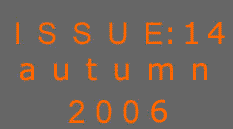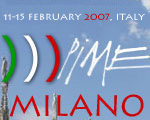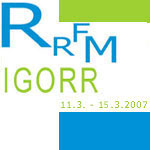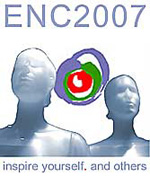

A “humanising” process: Making science
stimulating and relevant to young people
By Nathalie Guillaume (CEA)
In France, the number of students studying the
sciences decreased by 23% between 1994 and 1999. And that tendency
has not been reversed since. This is a worryingly familiar scenario
that is repeated in a number of countries across Europe, where
the appreciation for science learning – at both the secondary
and university level – appears to be in decline. The general
lack of interest among many young Europeans for studying sciences
or pursuing a scientific career is a major challenge facing the
nuclear industry. This disturbing trend will lead to a talent
deficit and have a significant impact upon our future capacity
to bring innovative solutions to the market place. This, in turn,
could have a negative effect upon a European economy that thrives
on innovation and new technology.
Many young people have been discouraged from
studying the sciences, a situation that is mirrored in most European
countries - as the last EU Eurobarometer
survey on sciences confirmed. But why is this so? 67% of students
in European schools who responded to the survey said that they
thought that science lessons should be made more attractive. Furthermore,
sciences are often used as a basis for identifying and selecting
the best performing pupils, who then very rarely go on to pursue
scientific careers.
The lack of interest in studying for degrees
in certain scientific subjects seems to indicate that many young
people do not perceive a career in the sciences to be an interesting
or lucrative option. And yet, more and more young people - quite
reasonably - want to participate in debates on key issues that
involve making fundamental scientific and technological choices.
From our industry’s perspective, involving
more young people in such a debate and showing them how the sciences
are more “human” and relevant to every day life will
help to correct the many myths, misunderstandings and misrepresentations
that have led to the demonisation of nuclear technologies and
will help to inspire more of them to pursue a scientific career
path.
A reliable partner for government
Conscious of the challenge facing the nuclear
industry, the Communications Division of the CEA has developed
tailor-made products and organised a number of activities aimed
at raising the interest level and appetite for the sciences among
young people. The main goal of these initiatives is to make them
more conscious of how vital the sciences and research are to the
future of society and the global economy. Our first objective,
one which has been achieved, was to establish a basis for co-operation
with the French Education Ministry, so that the CEA would be included
as a major partner in the government’s programme for action.
Indeed, we have played a fundamental role in establishing the
first specially adapted training and the post-graduate training
programme for science teachers offered by one of the most important
national teacher training establishments in France – the
IUFM (Institute for the Training of Primary and Secondary Schools
Teachers).
Another successful initiative has been the “science
cafés” that are organised by the CEA in a number
of secondary schools across France. The focus of these interactive
discussion sessions is not so much what is on the drinks menu,
but rather a number of key scientific issues chosen by teachers
and pupils, such as radioactivity, the global climate, astrophysics
and nuclear medicine. Pupils get to meet young researchers outside
of the school context - in a less traditional, extra-curricular
setting.
Teachers as opinion-leaders
Today, teachers are more and more seen as opinion-leaders
for pupils and families, especially when it comes to providing
career guidance and orientation. That is why we at the CEA have
recently co-ordinated a project with the French Institution for
the Information of Families and Orientation of Pupils (ONISEP).
This project, called “Chercheurs Croqués,”
is aimed at making teachers and pupils meet with researchers and
discuss the many aspects involved in pursuing a career in science
(in France and Belgium). A DVD and a magazine have been produced
and distributed to 12,000 secondary schools in France. The project
was financed by the European Union as part of an initiative of
the FP6 (6th Framework Programme of the European Commission)
called “Researchers in Europe, 2005”.
Choose disseminating partners
National and regional actions are also organised
by the CEA’s Communications Division and by the communications
teams at the nine CEA centres across France.
In schools, in laboratories, in bookshops and
cafés, the CEA centres - even those working in the military
research field - organize meetings, carry out research experiments
and organise conferences, both during Science Week and throughout
the year. This is a responsibility that all public research institutions
are required to fulfil. However, there are 13 millions pupils
and nearly one million teachers in France, so we must also rely
on partners to help us organise activities and to disseminate
information. We are also trying to reach certain regions where
the CEA is not yet present, for example in the centre of France
in cities like Poitiers and Clermont Ferrand. Some of our partners,
like Fondation 93, are actively spreading the message and meeting
young people on a regular basis in the eastern suburbs of Paris,
many of them areas plagued by major social problems. We also organise
experiments and teaching sessions in many secondary schools with
experienced researchers.
New tools to “humanize” the sciences
The approach adopted differs according to the
age group of the pupil. With the very young, it is a question
of “charming” them, i.e. emphasising the appealing
and fun aspects involved. With the older pupils, it’s more
a question of guidance and advice. The key, whatever the age group,
is to work hand-in-hand with the teachers and to make the sciences
seem more human and relevant to young people.
Among the projects that we do with the youngest
age group one that is particularly original. It involves the creation
of a book (fictional) on the subject of the sun or on the global
climate by a class of pupils of primary school age, together with
the help of a CEA physician.
A fun and educational booklet for children aged
between 10 and 14 years has also been published by the Playbac
publishing house. It is all about energy and simple physics. IN
addition, a special issue of a very successful daily magazine
for youngsters aged between 14 and 18 years, called “l’Actu”,
and another one called “Imagine ton future”,
have also been published by the CEA – this time on the subject
of the atom. Reactions to these publications have been very positive
and new special issues are in the pipeline.
For teenagers and their teachers, we have printed
new pedagogical teaching booklets (120, 000 copies). So far, booklets
have already produced dealing with around 15 different subjects.
A teaching folder on radioactivity has also been produced with
the help of two NGOs devoted to scientific education. They contain,
for example, playing cards on the CEA and on radioactivity, and
a cartoon on radioactivity. Another folder on the subject of fusion
has been produced by the CEA’s centre at Cadarache.
On the CEA’s website, pupils can now find
possible subjects and information to do their homework and new
scientific and teaching-based cartoons are available for them.
To further “humanize” the sciences, a new website
more adapted to young people’s needs has been created, broadcasting
video clip portraits of young researchers and featuring animated
clips and teaching folders. We intend to increase by 20% this
year the number of visits to the educational part of our website.
Most of these educational tools can be viewed or ordered on the
CEA website at: www.cea.fr.
When we look at the results of studies carried
out among pupils on the subject of choosing a scientific carrier,
the most frequently received answer that sends out a negative
message about the sciences (40%) is “I am not good enough
in mathematics”. Teachers echo this finding and recognize
that young people rarely cope with or recover from a failure in
maths experienced in their early school career. The second most
commonly given answer concerns the ability - or perceived difficulty
- of balancing a normal private or family life with a scientific
career. The CEA’s CEA Jeunes project
aims to prove, with the help of teachers, that it is possible
to manage the family and professional life conundrum, and that
the life of a researcher is a perfectly normal one.
Although much remains to be done to make studying
sciences (at schools and university) and pursuing a career in
science appear a more relevant and attractive option to young
people, the CEA - like organisations in other countries - is tackling
the problem head-on. It is a strategic option for the nuclear
industry and the nuclear sciences must take the initiative. The
sings are that the tide could be turning at last.
More information can be found at the following web sites:
www.cea.fr/fr/jeunes/
www.cea.fr/fr/jeunes/Animation/anim.htm
www.cea.fr/fr/jeunes/Animation/LesFondamentaux.htm#Autres
Nathalie Guillaume (CEA)
|






